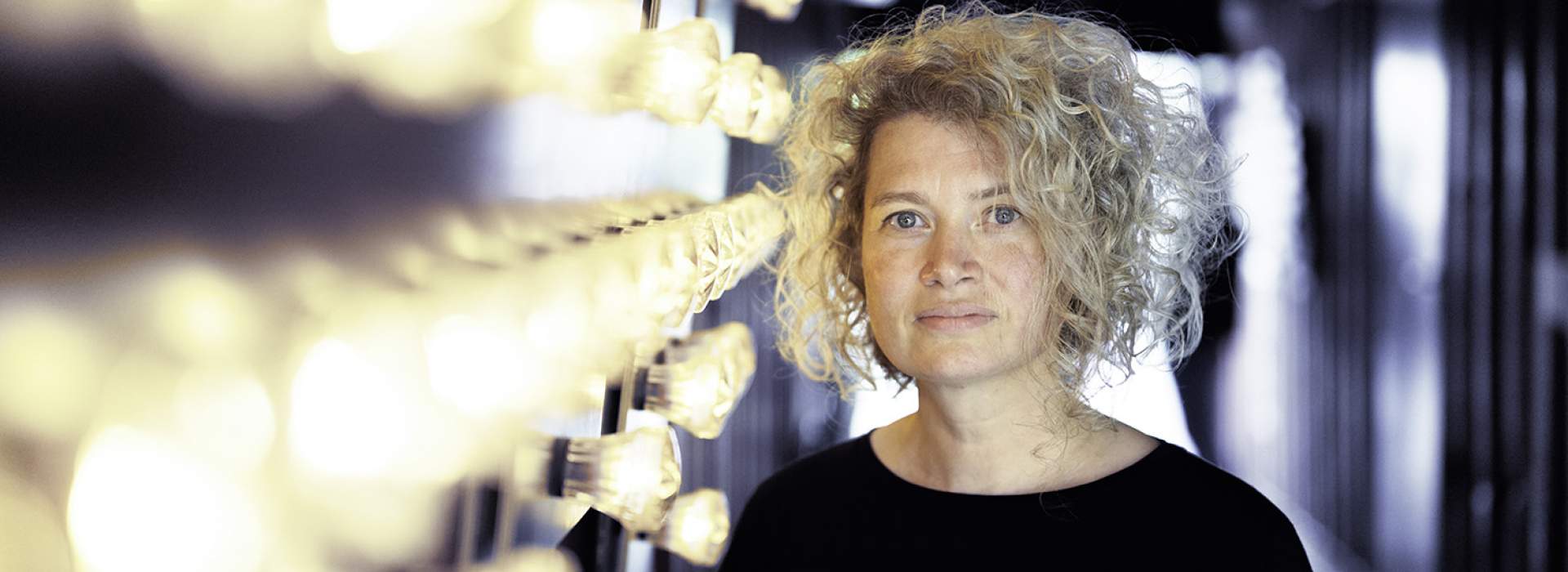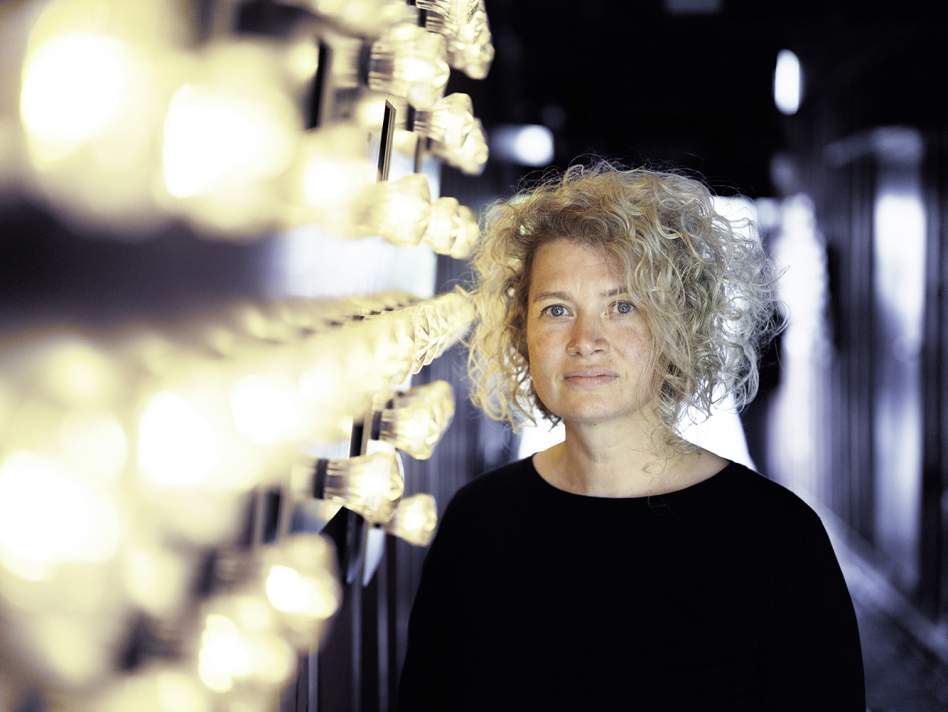

“There's a lot to see, to say and to discuss.”
In her role as Festival Curator, Edda Fahrenhorst wants the 16 exhibitions to create the basis for consideration and discussions.
Horizons Zingst: EAT IT – About Food. This is the title given to this year's »horizons zingst« Festival. What's it all about?
Edda Fahrenhorst: In 2022, (virtually) everything in the festival exhibitions revolves around the subject of food. We all eat everyday and, hopefully, well and with pleasure. In doing so, everything we eat and how we eat has a great influence of our daily lives, and also on whether we are and remain healthy in the long term. Good nutrition is for us – thankfully – a matter of course, but, unfortunately, not when it comes to global distribution. Food here at home also plays an economic factor, and is part of the big picture. Last but not least, all our eating habits have an impact on the environment and consequently, of course, on the climate as well. So, in this festival year we are embarking on a journey from our individual fridges to the big, overarching topic.
Why?
The answer to this question lies in our name: we are an environmental photo festival. For us, this means that we prepare themes for the general public that are relevant to the environment, society and the climate, and we do so in such as way that they provide a basis for consideration, discussion and debate. This can be done exceptionally well with a subject such as food, because every one of us has to deal with it every day – so we can all join the discussion.
And photography?
The photography is great, because virtually no other medium triggers reactions in such a direct and immediate manner. Photography – or better still, the photographers – can evaluate, can be political, opinionated, can show an attitude, reveal correlations, or tell stories. This leads us to compare what we see with our own experience – especially when it comes to nutrition, which can provoke some pretty exciting and effective food for thought!
Do you have concrete examples when it comes to the exhibition range?
Of Course.
Who of us has never taken a mouldy vegetable out of the lowest drawer in the fridge and thrown it away? Klaus Pichler's One Third exhibition picks up this very topic, and brings it into the context of the worldwide waste of food and resources. For me, the images had an immediate impact: since seeing them I take much more care to ensure I use up all my groceries. This sometimes leads to absurd combinations, but also ensures plenty of amusement.
Of course, it's also about the pleasure: eating is fun, it's emotional and social. This can be seen in Gabriele Galimberti's series: he visited grandmothers all over the world and photographed them with a “family dish”. Conclusion: Grandma's food always taste great; however, you simply can't recreate any particular dish - it always turns out differently. Gabriele's photos invite us to dive into our own memories, but also to sit down at family tables around the world. They also serve to compare foodstuffs and how they're used – where fresh ingredients are used, and where mainly processed ones...
There will also be things to make you laugh and amaze you: Jan von Holleben, for example, deals with that magic ingredient, sugar, which is delicious of course, but has two properties that are quite particular... The gigantic Feed the Planet project by George Steinmetz, has a very special place among the exhibitions. The US American shows us how and where the food for the now close to eight billion people in the world is produced. As he says, “If we all knew more about how our food is produced, we would be able to make better decisions. After all, the food industry only produces what we consume. And the cumulative impact of our individual choices is enormous.”
That summarises very well the intention behind the topic we're presenting at the festival: to provoke thoughts around food in general, but, of course, always in relation to our own habits; and if something can be done to change them – to the advantage of everyone individually, but also within the larger context of the environment and the climate.
What's your personal benchmark on the issue – what does it look like in your pantry?
I've been dealing with this issue – together with my family, which includes the children of course – for a long time, and it's always evolving. For example, after a school project, we repeatedly began checking the lists of ingredients and have consistently eliminated palm oil (which unfortunately includes many delicious sweets, which is very difficult, especially for me), as palm oil is directly linked to the clearing of the rain forests. The same thing applies to Kinder Surprise eggs, which, in addition to palm oil are encumbered by plastic and aluminium packaging. Together we've tried out many vegetarian and vegan products (vegan burgers have actually become quite good) and we cook a lot ourselves with fresh vegetables (children and vegetables... say no more...); or we make sure that in winter we only buy fruit from Europe and not from abroad (unless of course we're talking about pineapple...).
So, as an interim summary of our journey, I can say that we are doing our best to find a good way; doing without certain things is absolutely feasible, yet we enjoy what we can, and don't regret when we succumb to temptation and sometimes eat less than perfectly (according to the strictest standards). After all, eating together represents a time when people sit together at the table, speak together and, hopefully, have a good time. Even if every now and then the conversation turns to what we are going to try next, to become better and more sustainable in our consumer behaviour.
»horizons zingst«, however, is not just about a theme and exhibitions. What else can people making their way to Zingst expect?
Quite simply and always: photography!
And in any directions you look.
Our visitors can chose which aspect of photography they're particularly interested in: Is it about photographic exchange? In that regard, many exciting guests from all areas of photography will be there throughout the ten festival days; some will appear on the festival stages, and apart from that will be approachable every evening during the flood of images projected on the beach. Are you someone who likes to challenge yourself photographically, learn more and further develop your own photography? Then the Photo School and BFF Academy programs are the thing for you – these apply to every level of proficiency...
Is it the technology that interests you? Then the photo market during the second half of the festival – as well as various other locations – offer the change to try out, to talk shop, and yes, also to purchase. Above all, however, as we just mentioned, visitors to the festival who are looking for inspiration, content, and photographic discourse, can look forward to 16 exhibitions with over 60 photographers, all over Zingst! The great thing about »horizons« – at least in my opinion – is that each person can choose the thing about photography that they're interested in. And when your eyes and your brain need a break, you can take a stroll on the beach before returning to explore and better understand the great diversity of expressions of this topic, that reaches the farthest corners of the world. So, we're delighted to be able to invite our visitors to the upcoming festival, to go on a journey around a topic with much to see, to say and to discuss.